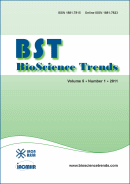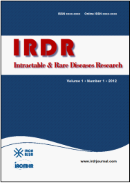Drug Discov Ther. 2023;17(4):248-256. (DOI: 10.5582/ddt.2023.01035)
LncRNA SNHG1 upregulates FANCD2 and G6PD to suppress ferroptosis by sponging miR-199a-5p/3p in hepatocellular carcinoma
Zhou L, Zhang Q, Cheng J, Shen X, Li J, Chen M, Zhou C, Zhou J
Ferroptosis is a form of regulated cell death (RCD) triggered by iron-dependent lipid peroxidation and is closely associated with the occurrence and progression of hepatocellular carcinoma (HCC). The lncRNA SNHG1 (small nucleolar RNA host gene 1) has been shown to play an oncogenic role in HCC, but its function in RCD other than autophagy and apoptosis is still unknown. Here, we investigated the correlation between SNHG1 and 156 typical markers of five RCD types based on RNA sequencing data from The Cancer Genome Atlas database and showed the negative regulators of ferroptosis FANCD2 (Fanconi anemia complementation group D2) and G6PD (glucose-6-phosphate dehydrogenase) to be the most highly and fifth most highly correlating factors with SNHG1, respectively. A competitive endogenous RNA network of SNHG1 – miR-199a-5p/3p – FANCD2/ G6PD was constructed bioinformatically. In vitro experiments showed that overexpression of the miR- 199a precursor led to a decrease in expression of SNHG1, FANCD2, and G6PD, whereas knockdown of SNHG1 decreased expression of FANCD2 and G6PD but increased levels of miR-199a-5p and miR-199a-3p in HCC cells (Huh7 and HepG2). In addition, knockdown of SNHG1 increased erastinmediated ferroptosis, iron accumulation, and lipid peroxidation. These results suggest that SNHG1 upregulates FANCD2 and G6PD by sponging miR-199a, thereby inhibiting ferroptosis in HCC. Moreover, a signature based on expression of SNHG1, FANCD2, and G6PD was identified as being associated with overall survival and the immunological microenvironment in HCC. Collectively, this study identified the SNHG1–miR-199a–FANCD2/G6PD axis in HCC, which is a potential marker for the prognosis and therapy of this tumor.







